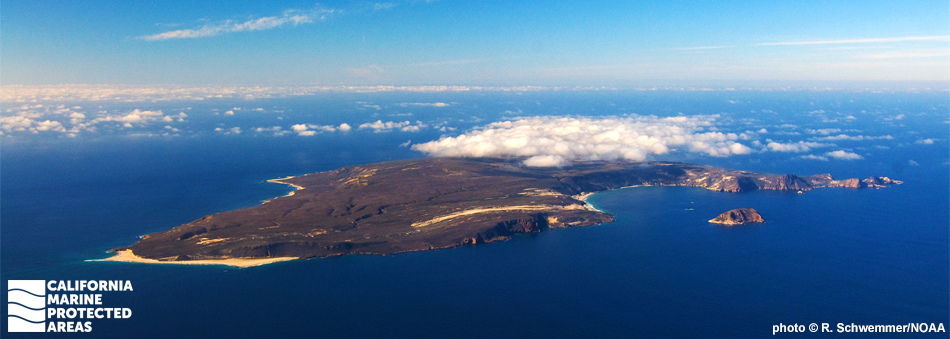
Overview
San Miguel Island, the westernmost of the Channel Islands, has a jagged, rocky coastline dotted with sandy beaches. Its exposure to the wind and open ocean makes it unique and contributes to an array of life not found on the other, less exposed islands. Harris Point State Marine Reserve (SMR) and the federal Harris Point Marine Reserve (FMR) extend north from the island. These remote marine protected areas (MPAs) are located about a 60-mile boat ride from Ventura Harbor.
Protecting more than 25 square miles of marine habitat, Harris Point SMR encompasses rocky reef, kelp forest, and sandy seafloor ecosystems, which support a variety of marine life. Where the SMR ends at three nautical miles from shore, the FMR continues farther offshore to meet the outer boundary of the surrounding Channel Islands National Marine Sanctuary.
California spiny lobsters, wolf-eels, rockfish, Risso’s dolphins, northern elephant seals, and white sharks are frequently observed here. Harris Point SMR lies near one of the largest sea lion breeding colonies in the world, and San Miguel Island itself includes one of the oldest archaeological sites in California. The island's unique environment, wildlife, and history attract biologists, archaeologists, and adventure seekers year-round.
Regulations
It is unlawful to injure, damage, take, or possess any living, geological, or cultural marine resource.
California Code of Regulations Title 14, Section 632(b)(103)(opens in new tab)
Note: The state and federal marine reserves share identical regulations.
Quick Facts
These facts are for the state marine reserve only.
MPA size: 25.40 square miles
Shoreline span: 7 miles
Depth range: 0 to 557 feet
Habitat composition*:
- Rock: 4.62 square miles
- Sand/mud: 22.08 square miles
*Habitat calculations are based on three-dimensional area and may exceed the total MPA area listed above.